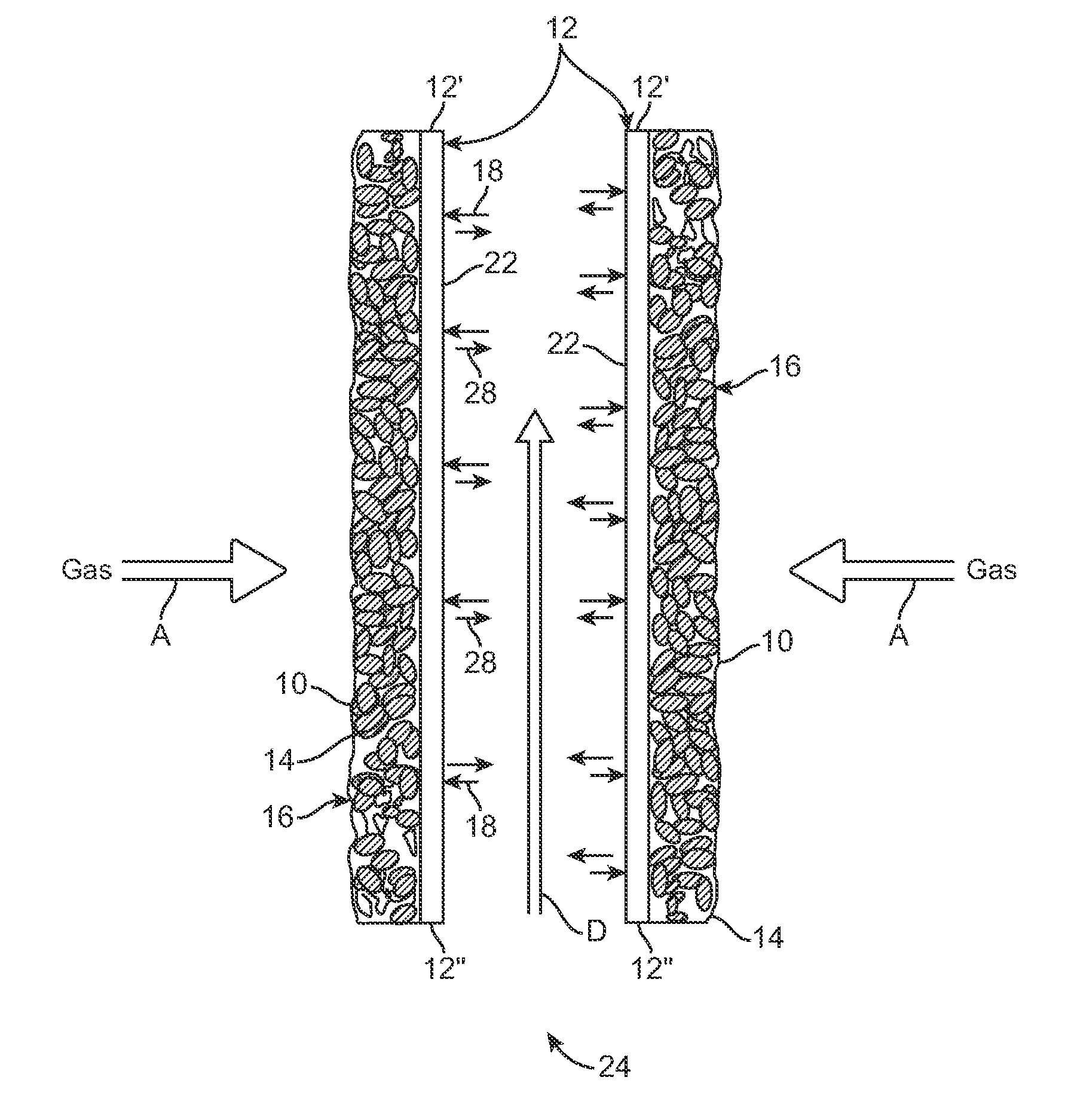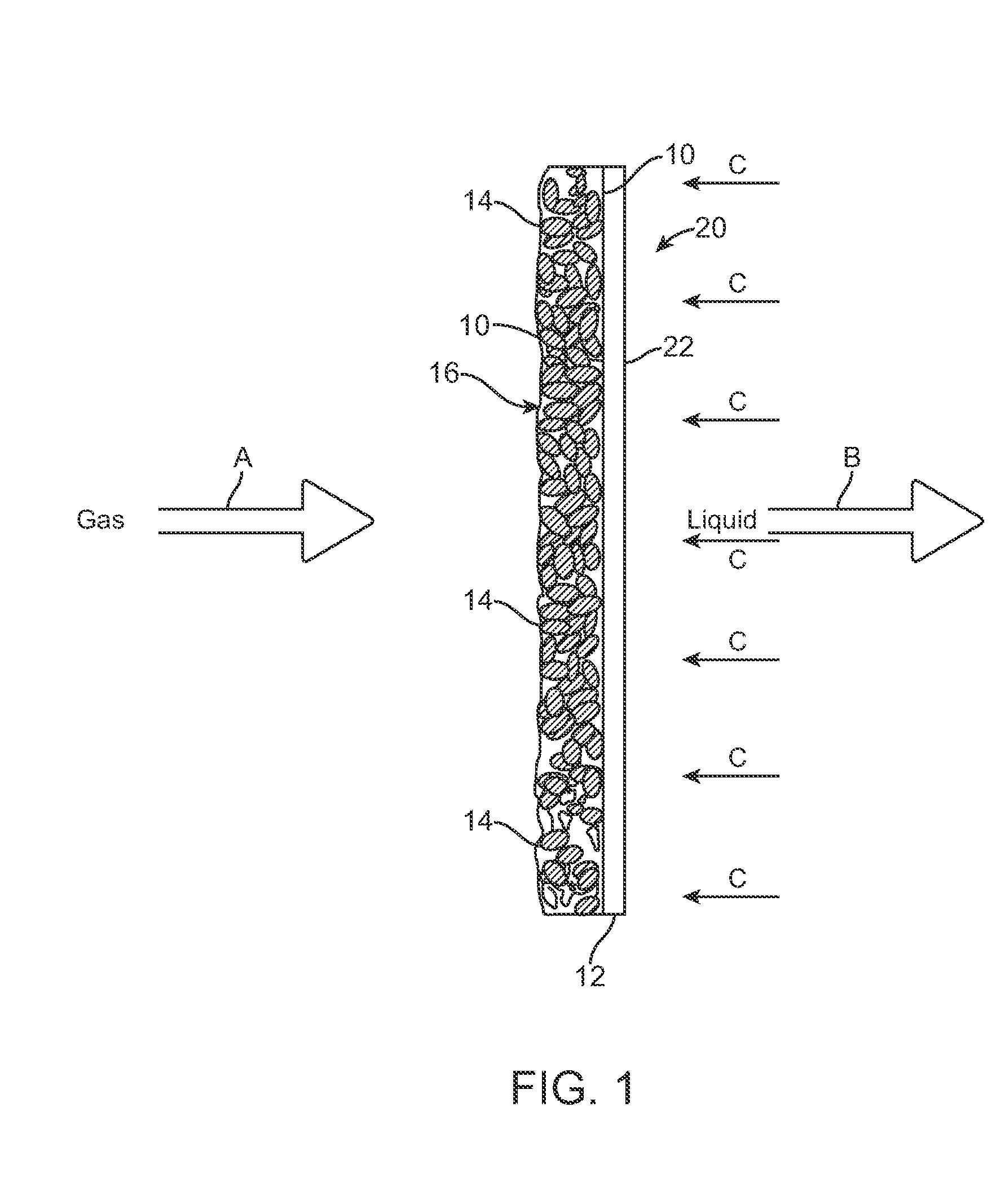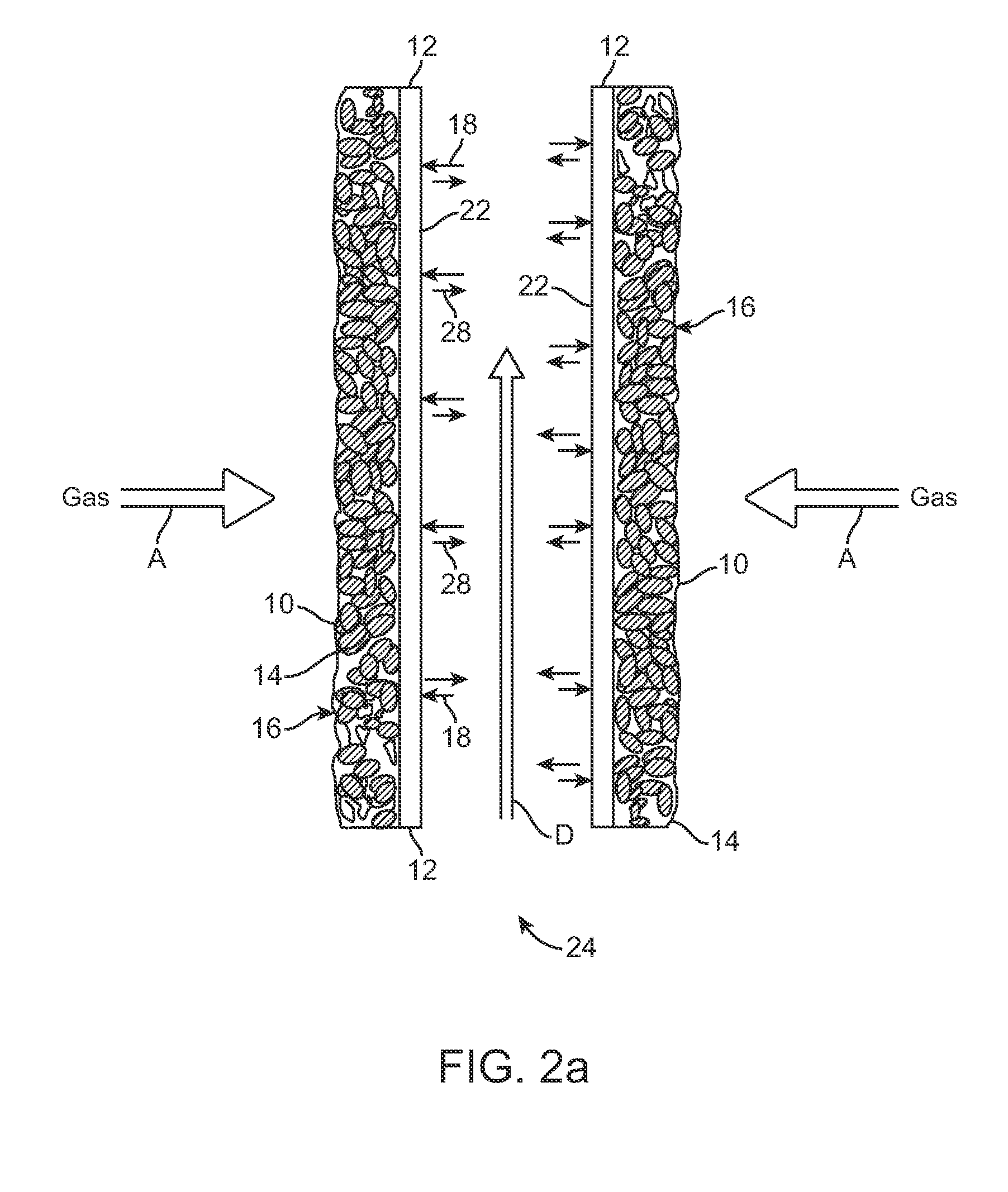Method of conversion of syngas using microorganism on hydrophilic membrane
a technology of hydrophilic membrane and microorganisms, which is applied in the direction of apparatus sterilization, biomass after-treatment, biofuels, etc., can solve the problems of inability of conventional yeasts to ferment c5 sugars to ethanol, inability to maintain biofilms, and inability to ferment lignin components. to achieve the effect of promoting microorganism colonies, facilitating maintenance of biofilms and periodic scouring of biofilms
- Summary
- Abstract
- Description
- Claims
- Application Information
AI Technical Summary
Benefits of technology
Problems solved by technology
Method used
Image
Examples
example 1
[0074]An Xampler™ ultrafiltration membrane cartridge Model UFP-100-C-4X2MA from GE Healthcare is used as a membrane bioreactor for the conversion of carbon monoxide and hydrogen / CO2 into ethanol. This membrane cartridge contains hydrophilic hollow fibers with 1 mm inner diameter and rated at 100 kDa nominal MWCO. The active membrane surface area of the module is 0.085 m2 (based on lumen area). The temperature of the membrane cartridge is maintained at 37° C. with flexible heater attached around the cartridge and regulated with a temperature controller.
[0075]The membrane module is connected to a 7.5-liter BioFlo® 310 Fermentor from New Brunswick Scientific (Edison, N.J.). The fermentor contains 3 liters of the fermentation medium, which is agitated at 100 rpm and maintained at 37° C. and pH 5.9 with 1 N NaOH and 1 N HCl. The fermentation medium has the compositions shown in Tables 1&2. The medium is pumped from the fermentor, flows through the lumen side of the membrane module, and r...
example 2
[0078]A membrane module containing the hydrophilic PES HYDRAcap® ultrafiltration hollow fiber membranes from Hydranautics (Oceanside, Calif.) was used as a membrane bioreactor for the conversion of carbon monoxide and hydrogen into ethanol and acetate. The hollow fibers had 0.83 mm inner diameter and a permeability rated at 100 kDa nominal MWCO. The active membrane surface area of the module is 0.09 m2 based on the fiber outer diameter. The temperature of the membrane cartridge is maintained at 37° C. with flexible heater attached around the cartridge and regulated with a temperature controller.
[0079]The membrane module was connected to a 3.0-liter BioFlo® 110 Fermentor from New Brunswick Scientific (Edison, N.J.). The fermentor contained 1.5 liters of the fermentation medium, which was agitated at 50-100 rpm and maintained at 37° C. and pH 5.8 with 1 N NaOH and 1 N HCl. The fermentation medium had the compositions shown in Tables 3&4. The medium was pumped from the fermentor, flows...
PUM
| Property | Measurement | Unit |
|---|---|---|
| diameters | aaaaa | aaaaa |
| pore diameter | aaaaa | aaaaa |
| thickness | aaaaa | aaaaa |
Abstract
Description
Claims
Application Information
 Login to View More
Login to View More - R&D
- Intellectual Property
- Life Sciences
- Materials
- Tech Scout
- Unparalleled Data Quality
- Higher Quality Content
- 60% Fewer Hallucinations
Browse by: Latest US Patents, China's latest patents, Technical Efficacy Thesaurus, Application Domain, Technology Topic, Popular Technical Reports.
© 2025 PatSnap. All rights reserved.Legal|Privacy policy|Modern Slavery Act Transparency Statement|Sitemap|About US| Contact US: help@patsnap.com



